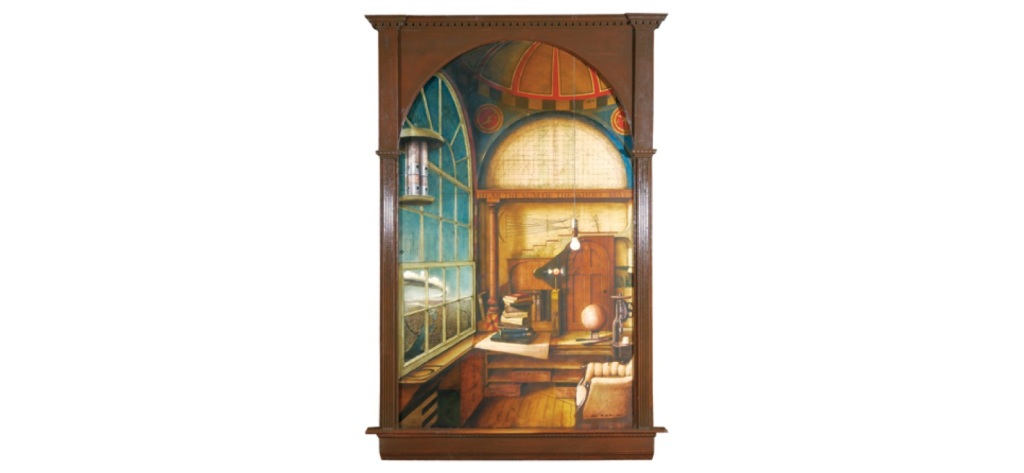I’m publishing a book! Quantum Steampunk: The Physics of Yesterday’s Tomorrow is hitting bookstores next spring, and you can preorder it now.
As Quantum Frontiers regulars know, steampunk is a genre of literature, art and film. Steampunkers fuse 19th-century settings (such as Victorian England, the Wild West, and Meiji Japan) with futuristic technologies (such as dirigibles, time machines, and automata). So does my field of research, a combination of thermodynamics, quantum physics, and information processing.
Thermodynamics, the study of energy, developed during the Industrial Revolution. The field grew from practical concerns (How efficiently can engines pump water out of mines?) but wound up addressing fundamental questions (Why does time flow in only one direction?). Thermodynamics needs re-envisioning for 21st-century science, which spotlights quantum systems—electrons, protons, and other basic particles. Early thermodynamicists couldn’t even agree that atoms existed, let alone dream that quantum systems could process information in ways impossible for nonquantum systems. Over the past few decades, we’ve learned that quantum technologies can outperform their everyday counterparts in solving certain computational problems, in securing information, and in transmitting information. The study of quantum systems’ information-processing power forms a mathematical and conceptual toolkit, quantum information science. My colleagues and I leverage this toolkit to reconceptualize thermodynamics. As we combine a 19th-century framework (thermodynamics) with advanced technology (quantum information), I call our field quantum steampunk.
Glimpses of quantum steampunk have surfaced on this blog throughout the past eight years. The book is another animal, a 15-chapter closeup of the field. The book sets the stage with introductions to information processing, quantum physics, and thermodynamics. Then, we watch these three perspectives meld into one coherent whole. We tour the landscape of quantum thermodynamics—the different viewpoints and discoveries championed by different communities. These viewpoints, we find, offer a new lens onto the rest of science, including chemistry, black holes, and materials physics. Finally, we peer through a brass telescope to where quantum steampunk is headed next. Throughout the book, the science interleaves with anecdotes, history, and the story of one woman’s (my) journey into physics—and with snippets from a quantum-steampunk novel that I’ve dreamed up.
On this blog, different parts of my posts are intended for different audiences. Each post contains something for everyone, but not everyone will understand all of each post. In contrast, the book targets the general educated layperson. One of my editors majored in English, and another majored in biology, so the physics should come across clearly to everyone (and if it doesn’t, blame my editors). But the book will appeal to physicists, too. Reviewer Jay Lawrence, a professor emeritus of Dartmouth College’s physics department, wrote, “Presenting this vision [of quantum thermodynamics] in a manner accessible to laypeople discovering new interests, Quantum Steampunk will also appeal to specialists and aspiring specialists.” This book is for you.
Strange to say, I began writing Quantum Steampunk under a year ago. I was surprised to receive an email from Tiffany Gasbarrini, a senior acquisitions editor at Johns Hopkins University Press, in April 2020. Tiffany had read the article I’d written about quantum steampunk for Scientific American. She wanted to expand the press’s offerings for the general public. Would I be interested in writing a book proposal? she asked.
Not having expected such an invitation, I poked around. The press’s roster included books that caught my eye, by thinkers I wanted to meet. From Wikipedia, I learned that Johns Hopkins University Press is “the oldest continuously running university press in the United States.” Senior colleagues of mine gave the thumbs-up. So I let my imagination run.
I developed a table of contents while ruminating on long walks, which I’d begun taking at the start of the pandemic. In late July, I submitted my book proposal. As the summer ended, I began writing the manuscript.
Writing the first draft—73,000 words—took about five months. The process didn’t disrupt life much. I’m used to writing regularly; I’ve written one blog post per month here since 2013, and I wrote two novels during and after college. I simply picked up my pace. At first, I wrote only on weekends. Starting in December 2020, I wrote 1,000 words per day. The process wasn’t easy, but it felt like a morning workout—healthy and productive. That productivity fed into my science, which fed back into the book. One of my current research projects grew from the book’s epilogue. A future project, I expect, will evolve from Chapter 5.
As soon as I finished draft one—last January—Tiffany and I hunted for an illustrator. We were fortunate to find Todd Cahill, a steampunk artist. He transformed the poor sketches that I’d made into works of art.
Early this spring, I edited the manuscript. That edit was to a stroll as the next edit was to the Boston Marathon. Editor Michael Zierler coached me through the marathon. He identified concepts that needed clarification, discrepancies between explanations, and analogies that had run away with me—as well as the visions and turns of phrase that delighted him, to balance the criticism. As Michael and I toiled, 17 of my colleagues were kind enough to provide feedback. They read sections about their areas of expertise, pointed out subtleties, and confirmed facts.
Soon after Michael and I crossed the finished line, copyeditor Susan Matheson took up the baton. She hunted for typos, standardized references, and more. Come June, I was editing again—approving and commenting on her draft. Simultaneously, Tiffany designed the cover, shown above, with more artists. The marketing team reached out, and I began planning this blog post. Scratch that—I’ve been dreaming about this blog post for almost a year. But I forced myself not to spill the beans here till I told the research group I’ve been building. I shared about the book with them two Thursdays ago, and I hope that book critics respond as they did.
Every time I’ve finished a draft, my husband and I have celebrated by ordering takeout sandwiches from our favorite restaurant. Three sandwich meals are down, and we have one to go.
Having dreamed about this blog post for a year, I’m thrilled to bits to share my book with you. It’s available for preordering, and I encourage you to support your local bookstore by purchasing through bookshop.org. The book is available also through Barnes & Noble, Amazon, Waterstones, and the other usual suspects. For press inquiries, or to request a review copy, contact Kathryn Marguy at kmarguy@jhu.edu.
Over the coming year, I’ll continue sharing about my journey into publishing—the blurbs we’ll garner for the book jacket, the first copies hot off the press, the reviews and interviews. I hope that you’ll don your duster coat and goggles (every steampunker wears goggles), hop into your steam-powered gyrocopter, and join me.





I have already placed my preorder. Looking forward to reading the book. Thanks!
Congratulations!
Tony Zee told me how Steven Weinberg (who sadly passed away a few days ago) told him to first publish popular books before writing textbooks. So I hope you follow in their footsteps, and after publishing a successful popular book, consider also publishing textbooks on your field.
Congratulations! I’ll look forward to seeing it on the bookshelves. (Are you related to Paul Halpern? I’ve read and enjoyed several of his pop science books.)
Thank you! I’d be honored to be related to Paul Halpern, but we don’t know of any family relationship between us.
Well, you’re both scientists and published authors, so there’s that! 🙂
(BTW: Love the steampunk drawing of the Bloch sphere! The artwork alone sounds like good reason to get the book.)
Pingback: My 100th anniversary with Quantum Frontiers | Quantum Frontiers
Pingback: Quantum estuary | Quantum Frontiers
this looks very intriguing, I will take a look!
Pingback: Quantum Frontiers: Quantum Estuary – The Qubit Report
Pingback: A quantum-steampunk photo shoot | Quantum Frontiers
Pingback: Eight highlights from publishing a science book for the general public | Quantum Frontiers
Pingback: Let the great world spin | Quantum Frontiers
Pingback: Colliding the familiar and the anti-familiar at CERN | Quantum Frontiers
Pingback: Announcing the quantum-steampunk creative-writing course! | Quantum Frontiers
Pingback: Sculpting quantum steampunk | Quantum Frontiers
Pingback: Happy 200th birthday, Carnot’s theorem! | Quantum Frontiers